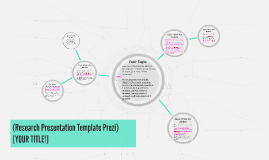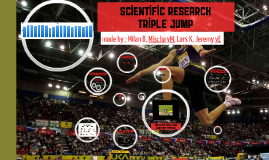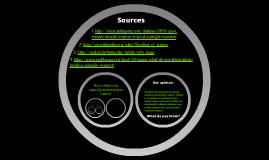Scientific Research Poster Presentation
Transcript: Key Components of a Research Poster Title and Author Information Abstract and Introduction The title should be clear and descriptive, capturing the essence of the research. Author information, along with affiliations, provides credibility and context to the presented work, allowing viewers to identify contributors and institutional backgrounds. An abstract provides a succinct summary of the study, often 250 words or less, outlining the purpose, methods, results, and conclusion. The introduction sets the stage for the research, presenting background information and the significance of the study. Results and Findings Methodology Overview This section presents key outcomes of the research, often through graphs and tables to illustrate trends and data clearly. Results should be concise yet comprehensive, enabling viewers to grasp the core findings effectively. The methodology section details the research design, sampling methods, and data collection processes. Clear descriptions allow replication of the study and validate the findings, ensuring transparency in academic research. Introduction to Scientific Research Scientific Research Poster Presentation Conclusion and Future Work Conclusions summarize the implications of the findings, linking back to the research question. Suggestions for future research highlight areas needing further exploration, encouraging continued inquiry and innovation in the field. Research Methodologies Definition of Scientific Research Research methodologies define the strategies and techniques used to collect, analyze, and interpret data. Common methodologies include qualitative, quantitative, and mixed methods approaches, each suited for different types of research questions. Scientific research is a systematic endeavor that constructs and develops knowledge through empirical and measurable evidence. It involves formulating questions, generating hypotheses, and employing specific methodologies to reach conclusions. Importance of Research in Advancements Design Principles for Effective Posters Overview of the Research Process Research fuels advancements by providing evidence-based solutions to complex problems. It is essential in fields like medicine, technology, and environmental science, driving innovation and improving quality of life. The research process typically follows a series of steps: identifying a problem, conducting a literature review, formulating a hypothesis, designing a study, collecting data, analyzing results, and disseminating findings. This structured approach ensures reliability and validity. Layout and Organization A well-structured layout guides the viewer’s eye through the poster seamlessly. Key sections should flow logically, incorporating headings and subheadings to enhance readability and organization of information. Visuals: Charts and Graphs Use of Color and Fonts An Overview of Recent Findings and Innovations Visual representations, such as charts and graphs, can effectively convey complex data quickly. Including visual aids not only captures attention but also simplifies the interpretation of results, enhancing overall comprehension. Color choices can evoke emotions and attract attention, while font selection impacts readability. A balance of contrasting colors and legible fonts is essential for ensuring that information is accessible and engaging to viewers. Engaging the Audience Engagement strategies include incorporating questions, interactive elements, or eye-catching visuals. Posters that invite viewers to participate or reflect on the research foster a dynamic exchange of ideas during presentations. Presenting and Discussing Research Strategies for Engaging Presentations Handling Questions and Feedback Prepare for questions by anticipating audience inquiries and formulating concise responses. Encourage feedback to foster discussions and consider it a valuable tool for improving future research. To captivate an audience, utilize storytelling techniques that highlight the relevance of your research. Incorporate visual aids effectively to enhance understanding and retention of complex information. Learning from Peer Discussions Importance of Networking at Conferences Participating in discussions enhances understanding of current trends and challenges in research. Insights gained from peers can provide alternative perspectives and improve research methodologies. Networking offers opportunities to connect with peers, share ideas, and receive constructive criticism. Engaging with other researchers can lead to collaborations and enhance visibility in the scientific community.

















